Spirostreptida key
Tasmanian Spirostreptida are cylindrical and either black or gray. The one exception is the large species Amastigogonus fossuliger, whose body has a variably strong greenish tinge.
As with Polydesmida, you can only positively identify Spirostreptida by close examination of the gonopods of a male. The good news is that unlike Polydesmida, Spirostreptida become sexually mature at an early stage and keep growing, adding segments at the rear of the body and increasing slowly in diameter. I suspect that very large Tasmanian spirostreptidans may be 3-5 years old.
The bad news is that Spirostreptida, unlike Polydesmida, hold their gonopods within their bodies, and you may have to dissect specimens to extract the gonopods. If you collect Spirostreptida live, an alternative to dissection is to kill the specimens by freezing, then immerse the specimens for 12-24 hours in tap water. The gonopods will often (but not always) be extended in males treated this way, and the millipede can then be preserved in alcohol with extended, easily examined gonopods.
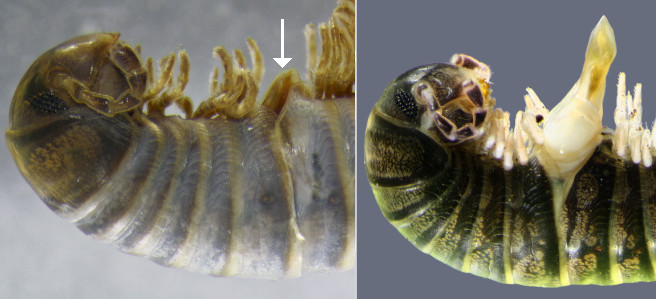
Long-preserved male (left) with mostly retracted gonopods (arrow); water-treated male (right) with extended gonopods
|
1a. Male first legs "normal-looking" with claw at tip; small species known only from Mt Weld in southern Tasmania
|
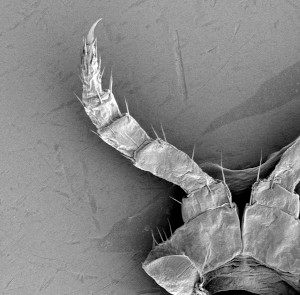 |
|
1b. Male first legs (L1) reduced, without claw at tip
|
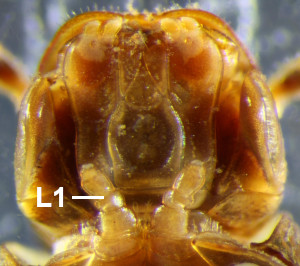 |
|
2a. Gonopods massive (see also image of water-treated male, above), adults 2.5-3+ mm in diameter
|
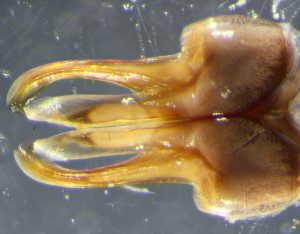 |
|
2b. Gonopods slightly protruding with spike and comb visible (head to left in image), adults 2-3 mm in diameter
|
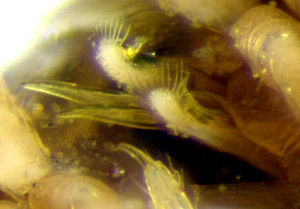 |
|
2c. Gonopods otherwise, adults 1.5-2.5 mm in diameter
|
|
|
3a. Gonopod in lateral view with 3 branches as shown (head to left)
|
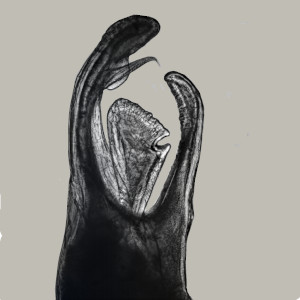 |
|
3b. Gonopods very small, in ventral view as shown
|
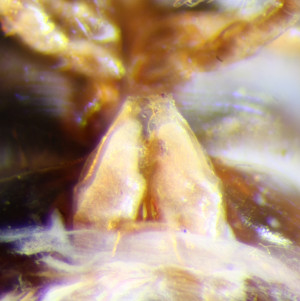 |
